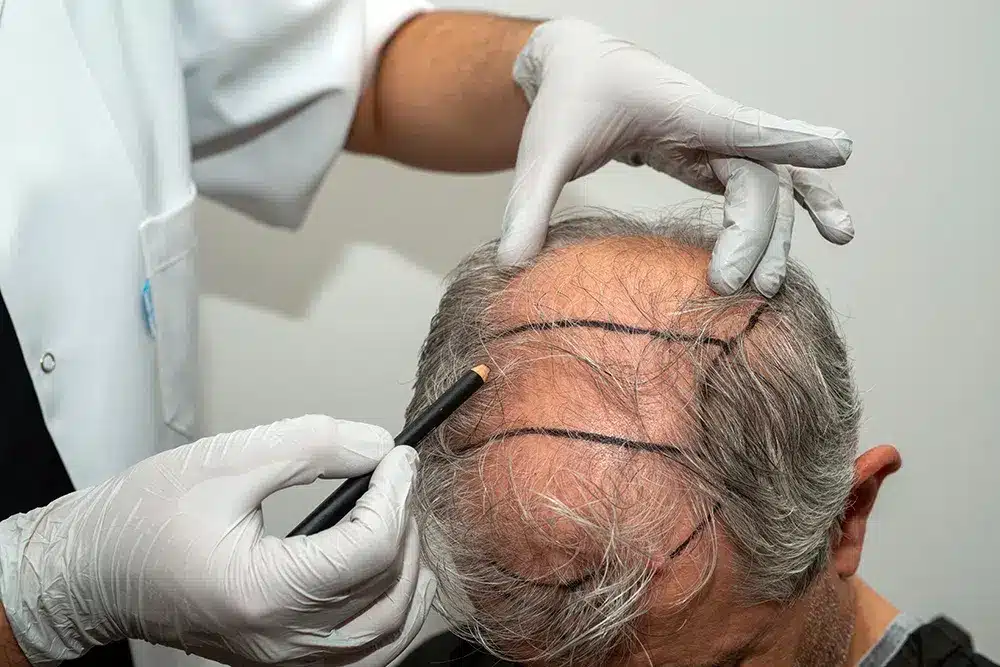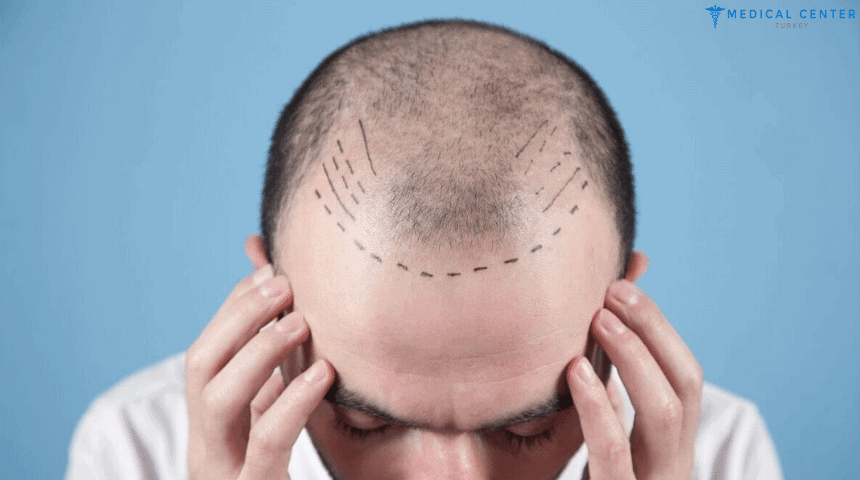Hair loss is a prevalent concern for both men and women in Pakistan. It can significantly impact self-esteem and confidence, leading many to seek solutions for a fuller head of hair. Thankfully, advancements in hair transplantation techniques offer a path toward regaining confidence.
Gone are the days of limited options and unnatural-looking results. Today, hair transplantation procedures in Pakistan utilize sophisticated techniques, particularly Follicular Unit Extraction (FUE), to achieve natural-looking hairlines and minimal scarring. This minimally invasive approach is revolutionizing hair restoration, empowering individuals to reclaim their confidence with a renewed sense of self.
This blog post delves into the world of FUE and other exciting advancements in hair transplantation available in Pakistan. We’ll explore how these procedures can help you achieve your desired hair restoration goals and embark on a journey towards a more confident you.
Table of Contents
The Concept of Hair Loss and Restoration Options in Pakistan
Hair loss is a natural phenomenon that affects a significant portion of the population in Pakistan, impacting both men and women. This gradual thinning or complete loss of hair can occur on the scalp, eyebrows, or other areas of the body.
While hair loss is a natural part of aging for some, it can also be triggered by various factors like genetics, hormonal imbalances, stress, and certain medical conditions. The psychological impact of hair loss can be significant, affecting self-esteem, confidence, and overall well-being.
Fortunately, there are solutions available in Pakistan for those seeking to address hair loss and regain a fuller head of hair. Hair transplantation has emerged as a viable and effective option for hair restoration.
Hair transplantation involves the surgical extraction of healthy hair follicles from a donor area (usually the back of the scalp) and transplanting them to the bald or thinning recipient area. This minimally invasive procedure allows for natural-looking hair growth in the targeted areas, offering a long-term solution for hair loss.
In Pakistan, two main hair transplant techniques are commonly used:
- FUT (Follicular Unit Transplantation): This technique involves surgically removing a strip of scalp from the donor area. The follicles are then dissected into individual follicular units and transplanted into the recipient area.
- FUE (Follicular Unit Extraction): This is a minimally invasive technique that involves extracting individual follicular units directly from the donor area using specialized micro-punches. These follicles are then transplanted into the recipient area one by one.
The choice between FUT and FUE depends on various factors, including the extent of hair loss, the patient’s desired outcome, and the surgeon’s expertise. However, FUE is increasingly becoming the preferred method due to its minimally invasive nature and minimal scarring.

Understanding The Deeper Process of FUE Revolution & Advantage
Hair transplantation in Pakistan has undergone a significant transformation with the rise of Follicular Unit Extraction (FUE). Unlike its predecessor, FUT (Follicular Unit Transplantation), FUE offers a minimally invasive approach to hair restoration, resulting in several advantages for patients.
FUE focuses on extracting individual follicular units, the natural groupings of 1-4 hair follicles, directly from the donor area. These units are meticulously extracted using specialized micro-punches, leaving behind tiny extraction sites that heal quickly with minimal scarring. This stands in stark contrast to FUT, which involves removing a strip of scalp, leaving a linear scar that can be noticeable, especially with shorter hairstyles.
The FUE procedure in Pakistan typically involves the following steps:
- Donor Area Preparation: The surgeon will shave or trim a small area on the back of the scalp, where hair growth is typically denser and more resistant to balding. This area serves as the donor zone for healthy follicles.
- Follicular Unit Extraction: Using the micro-punches, the surgeon carefully extracts individual follicular units one by one. This meticulous process ensures minimal disruption to surrounding tissues.
- Follicle Preparation: The extracted follicles are meticulously cleaned and prepared for transplantation.
- Recipient Area Preparation: The surgeon creates tiny recipient sites in the balding or thinning area using specialized tools. These sites are designed to mimic the natural direction and angle of hair growth.
- Follicle Transplantation: The prepared follicular units are then carefully implanted into the recipient sites one by one. This ensures a natural and even distribution of hair growth.
- Post-Operative Care: The surgeon will provide instructions on caring for the transplanted follicles and the scalp to optimize healing and minimize the risk of infection.
Compared to FUT, FUE offers several key benefits:
- Minimal Scarring: As mentioned earlier, FUE minimizes scarring due to the use of micro-punches for extraction. This allows for more discreet hair restoration, particularly beneficial for individuals with shorter hairstyles.
- Faster Recovery Times: The minimally invasive nature of FUE translates to faster healing and shorter recovery times compared to FUT. Patients can typically return to work and normal activities within a few days of the procedure.
- More Natural-Looking Hairline: By transplanting individual follicular units, FUE allows for a more natural and customized hairline design, mimicking the natural growth pattern of hair. This is in contrast to FUT, which can sometimes result in a “pluggy” appearance.
FUE has revolutionized hair restoration in Pakistan, offering patients a minimally invasive and effective solution for achieving a full head of hair and regaining their confidence. In the next section, we’ll explore exciting advancements in FUE technology that further refine the procedure and enhance patient outcomes.

Modern Advancements in FUE: Refining the Technique
While FUE itself represents a significant leap in hair restoration technology, the story doesn’t end there. Here in Pakistan, advancements are constantly being made to further refine the FUE technique, offering even greater precision, efficiency, and potentially improved patient outcomes. Let’s explore two exciting advancements:
1- DHI (Direct Hair Implantation): DHI, or Direct Hair Implantation, takes FUE a step further. Imagine a single-step procedure! This technique utilizes a specialized tool that simultaneously extracts individual follicular units with an FUE punch and implants them directly into the recipient area in one motion. This eliminates the need for a separate storage step for extracted follicles, potentially reducing trauma and improving hair growth rates. Here are the benefits of DHI:
- Reduced Dissection Trauma: Minimizing handling of the follicles can potentially lead to improved hair survival and growth rates after transplantation.
- Shorter Procedure Time: Combining extraction and implantation into one step streamlines the procedure, potentially reducing overall chair time for the patient.
- Enhanced Graft Survival: The minimal handling of follicles during DHI might contribute to improved graft survival rates, leading to a fuller head of hair.
2 – Sapphire FUE: Another exciting advancement is Sapphire FUE. This technique takes advantage of blades crafted from sapphire, a remarkably smooth and inert material. These blades offer several advantages over traditional steel blades:
- Sharper Blades, Cleaner Cuts: Sapphire blades are sharper than traditional steel blades, resulting in cleaner incisions for both extraction and implantation sites. This can minimize tissue damage and promote faster healing times.
- Reduced Friction, Improved Follicle Health: The smooth texture of sapphire blades minimizes friction during extraction, potentially leading to healthier transplanted follicles and potentially better hair growth outcomes.
- Minimal Crusting and Faster Healing: Clean incisions and reduced friction with Sapphire FUE might contribute to faster healing and less crusting at the recipient area, improving the overall patient experience.
These advancements, available alongside traditional FUE in Pakistan, provide patients with even more options for achieving a natural and long-lasting hair restoration experience. With potentially reduced discomfort and faster healing times, modern techniques continue to refine the art and science of hair transplantation.
The future of hair transplantation in Pakistan is brimming with exciting possibilities. Join us in the next section as we explore what lies ahead, from robotic assistance to personalized treatment plans, empowering you to make informed decisions about your hair restoration journey.
Beyond Technique – Finding the Right Specialist in Pakistan
While advancements in FUE and other techniques offer exciting possibilities, choosing the right hair transplant surgeon in Pakistan remains paramount. A skilled and experienced surgeon is crucial for achieving optimal results and maximizing your satisfaction.
Don’t hesitate to schedule consultations with multiple board-certified surgeons in Pakistan. This allows you to compare their approaches, experience with FUE and its refinements, and their design philosophy for hairlines. A good surgeon will actively listen to your concerns and goals, proposing a personalized treatment plan tailored to your unique needs.
Beyond qualifications and experience, consider other factors. Ensure the clinic is accredited by a reputable organization, signifying adherence to high safety standards. Patient reviews can offer valuable insights into the surgeon’s communication style, bedside manner, and overall patient care. Reading online reviews or requesting references from past patients can be a helpful step in your selection process.
Remember, choosing the right surgeon is an investment in your confidence and well-being. By carefully considering these factors and scheduling consultations with multiple surgeons, you can embark on your hair restoration journey with a trusted partner by your side. In Pakistan, you have access to skilled professionals and cutting-edge techniques, empowering you to achieve a natural-looking head of hair and a renewed sense of self-assurance.
Conclusion: The Future of Hair Restoration in Pakistan
There are a ton of intriguing prospects for hair transplantation in Pakistan in the future. Even more sophisticated and successful surgeries are anticipated thanks to technological advancements and individualized treatment programs. Consider robotic FUE providing less invasive procedures with quicker recovery periods. Although stem cell therapy research is still in its infancy, it has the potential to be a genuinely regenerative treatment for hair loss.
Pakistan is at the forefront of this exciting journey, with clinics actively adopting these advancements. This means you have access to a growing pool of qualified surgeons and cutting-edge techniques. Whether you choose FUE with its refinements like DHI and Sapphire, or explore future options like personalized treatment plans based on genetic testing, you have the power to reclaim a full head of hair and a renewed sense of confidence. Hair restoration in Pakistan is no longer just about the latest technique; it’s about empowering you to achieve your desired outcome and embrace a future with a full head of hair and newfound self-assurance.

